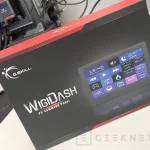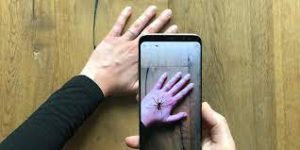Augmented reality is a technology that allows us to feed the physical world with digital information. Said information can be 3D models, photos and/or videos, which can be viewed on any device that has a digital camera. For this it is necessary to create an application that detects some element of the real world, this can be an object or an image.
This element is called a brand. Once the mark is detected by our camera, any information that has been programmed to enrich our visual experience is loaded onto the screen. The information can also be referenced to a point on the planet, in this case the mark is replaced by geopositioning data.
This is crucial for learning science, since students often find it difficult to visualize and understand complex phenomena, such as atoms, energy properties, or phenomena that can only be seen at microscopic or macroscopic levels.
AR allows the development of visualization skills, understood as the perception of an object that is seen or touched and the mental image that is created as a product of that perception. It is believed that it is a very important skill in all thought and especially in the sciences, since it seeks to build causal explanations, through experiences of how the world is, to a portion of it that is not necessarily visible to the human eye.
Now, this being such an advantageous technology, it is far from being used frequently in the classrooms of our country for various reasons. The first, and most fundamental, is that teachers don’t know that they can create their own activities with AR. There is software that allows you to create your own applications in a simple way and adjusted to your classes, these software are called author tools.
The second reason is the limited availability of free 3D objects to link in your AR activities. Ideally, when a teacher designs an activity, she does it based on her needs and with the freedom that she can have material for any topic. In the case of AR, it happens that it is not so easy to find 3D objects to show exactly the situation or the phenomenon that the teacher wants to address. Faced with this difficulty, it is necessary to provide banks of 3D objects from where they can be downloaded for free, the problem there is that the search for an object can take a long time diving and sometimes not find what you were looking for. The elaboration of 3D objects through photographs or videos is a possibility, but it is not always a solution to what is needed.
A greater development of technology is expected in order to solve this type of problem that only makes it difficult to take better advantage of its contributions to educational processes.




![[Img #74674]](https://thelatestnews.world/wp-content/uploads/2024/12/Santiago-Ramon-y-Cajal-The-promoter-of-modern-neuroscience-150x150.jpg)








![[Img #74674]](https://thelatestnews.world/wp-content/uploads/2024/12/Santiago-Ramon-y-Cajal-The-promoter-of-modern-neuroscience-300x200.jpg)


Add Comment